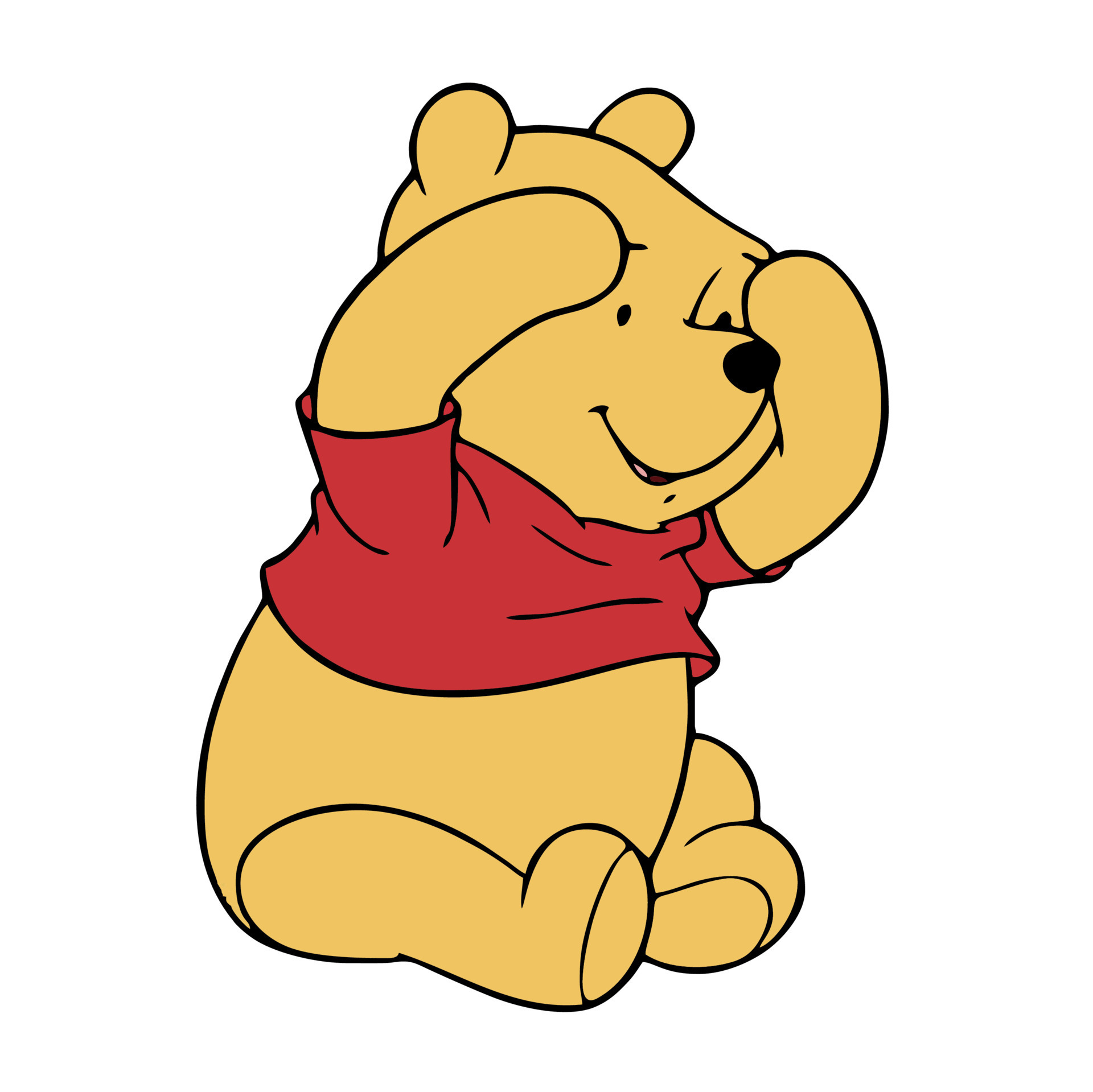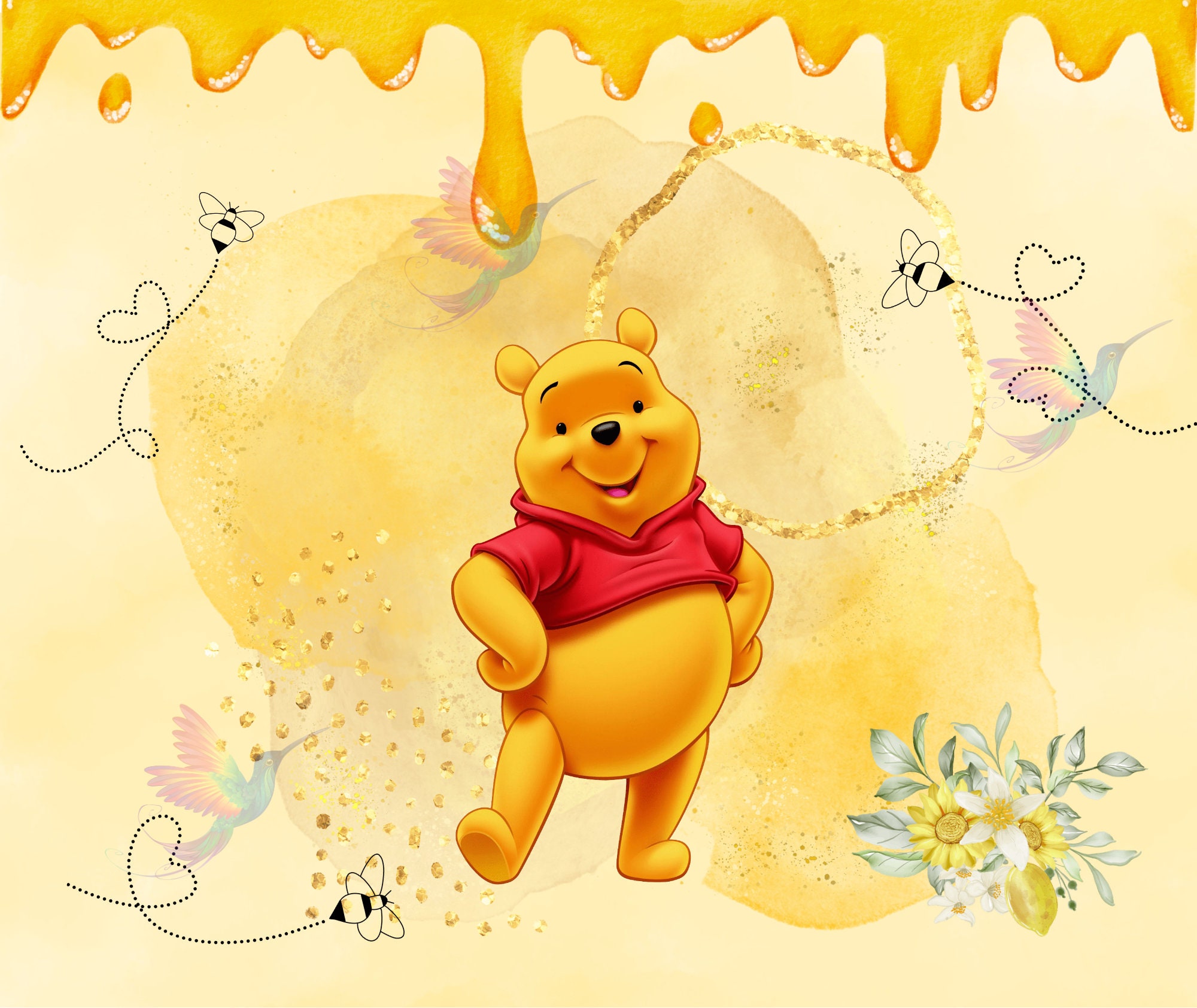Winnie the Pooh’s Characterization

Winnie the Pooh, the beloved fictional character created by A.A. Milne, is known for his endearing personality and simple-minded nature. His distinctive physical appearance and unwavering optimism have captured the hearts of generations of readers and viewers.
Winnie the Pooh, with his insatiable appetite for honey, could have found a treasure trove in the diamonds pit. The sparkling gems, as alluring as Pooh’s beloved honey, would have filled his belly with a different kind of sweetness, a glimmering wealth that would make his friends in the Hundred Acre Wood green with envy.
Physical Appearance
Winnie the Pooh is a large, anthropomorphic teddy bear with a round, honey-colored body, a short tail, and a red shirt. He is often depicted with a wide, innocent smile and curious eyes. His physical appearance reflects his childlike innocence and playful spirit.
Winnie the Pooh, with his endless supply of honey and his love of the forest, might not seem to have much in common with the complex world of quantum pits. But just as Pooh’s adventures often led him into unexpected and wondrous places, the study of quantum pits reveals a hidden realm of physics, where the very fabric of reality is shaped by the strange and beautiful principles of quantum mechanics.
Quantum pits are tiny, man-made structures that trap electrons in a two-dimensional plane, allowing scientists to explore the fundamental properties of matter in ways that were once unimaginable. And just as Pooh’s adventures always taught him something new about the world around him, the study of quantum pits continues to shed light on the deepest mysteries of our universe.
Personality Traits
Winnie the Pooh is known for his friendly and compassionate nature. He is always eager to help his friends and often puts their needs before his own. His kind and gentle demeanor make him a lovable character who brings joy to those around him.
Winnie the Pooh, the lovable bear from the Hundred Acre Wood, was known for his love of honey and his adventures with his friends. One rainy day, as Pooh was sheltering under a tree, he noticed a strange object lying on the ground.
It was a large, colorful canopy supported by a long stick, and Pooh had never seen anything like it before. Curious, he picked it up and examined it. It was then that he discovered the umbrella definition , a tool designed to protect one from the rain.
With his newfound knowledge, Pooh happily opened the umbrella and continued his adventure, sheltered from the raindrops.
Winnie the Pooh is also characterized by his love of honey. He is known for his frequent expeditions to find honey, often accompanied by his loyal companion, Piglet. His love of honey reflects his simple pleasures and his childlike sense of wonder.
In the realm of Winnie the Pooh’s Hundred Acre Wood, where honey flowed like liquid gold, the concept of a casino was as foreign as a buzzing bumblebee. But as the sun dipped below the horizon, casting long shadows across the forest, whispers of a place called “casino” drifted through the hushed undergrowth.
Casino meaning , a strange and alluring concept, began to pique the curiosity of the gentle Pooh and his friends, promising both fortune and folly in equal measure.
Strengths
Winnie the Pooh’s strengths lie in his unwavering optimism and his ability to see the good in everyone. He is always willing to lend a helping hand and is a true friend to those around him. His simple and innocent nature allows him to find joy in the simplest of things.
Weaknesses
Winnie the Pooh’s weaknesses include his lack of intelligence and his tendency to get into trouble. He is often forgetful and naive, which can lead to humorous situations. His love of honey can also sometimes get him into trouble, as he is often willing to do anything to get his hands on it.
Evolution over Time, Winnie the pooh
Winnie the Pooh’s characterization has evolved over time in different adaptations. In the original A.A. Milne stories, Pooh is portrayed as a simple-minded but lovable character who is always looking for honey. In later adaptations, such as the Disney animated films, Pooh’s character has been expanded to include more complex emotions and relationships.
Winnie the Pooh, the lovable bear from the Hundred Acre Wood, has a hidden secret. While we know him as a teddy bear, there exists a lesser-known marsupial version of the iconic character. Marsupial Winnie the Pooh is a fascinating creature with a pouch and a love for honey just like his famous counterpart.
Despite their differences, both versions of Winnie the Pooh embody the spirit of childhood, friendship, and the enduring power of imagination.
Relationships
Winnie the Pooh’s relationship with his friends is an important aspect of his character. His best friend, Piglet, is a small, timid pig who is always afraid of something. Pooh’s friendship with Piglet shows his compassionate and protective nature.
Winnie the Pooh also has a special relationship with Christopher Robin, the young boy who owns him. Christopher Robin represents the innocence and wonder of childhood, and his relationship with Pooh is a reminder of the importance of friendship and imagination.
Winnie the Pooh’s Impact on Popular Culture
Winnie the Pooh, the lovable bear from the Hundred Acre Wood, has captured the hearts and imaginations of generations worldwide. His enduring popularity stems from his relatable personality, heartwarming stories, and timeless appeal.
Global Popularity and Widespread Appeal
Winnie the Pooh’s global reach is undeniable. Translated into over 50 languages, his adventures have touched countless lives, transcending cultural and linguistic barriers. The character’s universal appeal lies in his endearing qualities, such as his innocence, kindness, and unwavering optimism, which resonate with people of all ages.
Merchandise, Adaptations, and Spin-Offs
Winnie the Pooh has become a global merchandising phenomenon, with countless products featuring his likeness and themes. From plush toys and clothing to home décor and collectibles, the character’s image has permeated every aspect of popular culture. Numerous adaptations and spin-offs have also been created, including animated films, television shows, video games, and even a Broadway musical.
Cultural Impact on Childhood Development and Education
Winnie the Pooh has had a profound cultural impact on childhood development and education. The character’s adventures teach valuable lessons about friendship, kindness, and the importance of imagination. His stories have been used in educational settings to promote literacy, social-emotional learning, and critical thinking skills.
Winnie the Pooh’s Literary and Artistic Significance

Winnie the Pooh’s literary and artistic significance lies in its enduring popularity, timeless themes, and iconic illustrations. The books have captivated generations of readers with their whimsical charm, gentle humor, and profound insights into friendship, kindness, and the simple joys of life.
Themes
The Winnie the Pooh books explore universal themes that resonate with readers of all ages. Friendship is a central theme, as the characters navigate the ups and downs of their relationships with each other. Kindness and compassion are also important themes, as the characters show empathy and support for one another. Additionally, the books explore the importance of imagination, play, and the simple pleasures of life.
Literary Style
A.A. Milne’s writing style is characterized by its simplicity, charm, and humor. He uses everyday language and familiar situations to create a world that is both relatable and magical. Milne’s prose is also known for its musicality and rhythm, which makes it a pleasure to read aloud.
Illustrations
E.H. Shepard’s illustrations are an integral part of the Winnie the Pooh experience. His charming and whimsical drawings bring the characters to life and create a vivid and memorable world. Shepard’s illustrations are also notable for their attention to detail and their ability to capture the emotions and personalities of the characters.
Adaptations
Winnie the Pooh has been adapted into numerous films, television shows, and other media. The most famous adaptation is the Disney animated films, which have introduced the characters to generations of children. While the Disney films are faithful to the spirit of the books, they do make some changes to the characters and stories. For example, the Disney films give Pooh a more anthropomorphic appearance and make him more talkative than he is in the books.